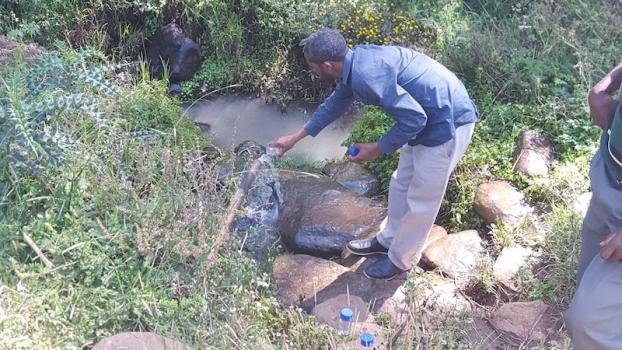How Can We Sustainably Increase Access to Water Services in Rural Areas in Ethiopia?
Lessons learned from the Millennium Water Alliance’s Ethiopia Program
What happens after USAID-funded WASH projects end? Are communities able to sustain gains in water and sanitation services after one, two, even 10 years? These are some of the key questions the Water Communications and Knowledge Management team answered through its recent ex-post evaluation of the Millennium Water Alliance-Ethiopia Program (MWA-EP) implemented between 2004–2009.
What did we evaluate? MWA-EP aimed to increase water and sanitation access, decrease water, sanitation, and hygiene (WASH)–related illnesses, promote integrated water resource management, and develop a partnership model for service delivery.
How did we evaluate it? The evaluation team sought to understand whether the increased access to water and sanitation attributed to the MWA-EP intervention proved to be sustainable almost a decade later, and why. We used a mixed-methods approach to data collection. We conducted 64 interviews, observations of 13 water points and 15 latrines, water quality tests at 10 water points, and collected secondary data from government entities and NGOs.
What did we find? MWA-EP improved water access, at least in the short term. However, we found only five of the 13 visited water points functioning fully at the time of our visit. An inventory of water points in the South Gondar Zone of Amhara showed that only 44 percent of MWA-EP–constructed water points functioned as of 2016 (in contrast to 68 percent of other water points). WASH committees (WASHCOs) struggled to effectively manage and raise the money necessary to maintain and repair the water points in their community. In some places it remains unclear who is in charge of water-point management, repair, and water quality testing—WASHCOs, local government, or NGOs? Perhaps this is why few if any water points are tested regularly for water quality; seven out of the 10 we tested came back positive for E. coli contamination. We also observed that mechanical issues with the water points affected functionality and reliability more than seasonal variations in water flow.
Most households that had built a latrine during the project continued to rebuild their latrines as necessary (when they become full or are damaged) after the end of the activity. Despite owners’ claims to always use their facilities, five out of 15 latrines observed showed no signs of use, and health extension workers noted significant challenges in convincing people to change their behaviors. Sustaining handwashing behaviors posed similar challenges. Though people indicated that they washed their hands regularly, none of the latrines observed had handwashing stations.
Why does this matter? Increasing rural access to safe water sources and the adoption of healthy sanitation and hygiene habits remain critical issues throughout the developing world. Yet the sustainability of donor activities designed to improve access is not always a given. Community water point management is difficult to sustain effectively, and new approaches may be necessary to increase access to water services in rural areas over the long term. Additionally, behavior change approaches have evolved over time, underscoring some of the limitations of earlier, simpler approaches like those used in the MWA-EP activity.
Want more information? Take a look at the full evaluation, the evaluation brief, or reach out to the Water CKM M&E specialist directly to learn more. You can also read the executive summary in Amharic or watch a webinar presentation of the findings.
By Kari Nelson, senior technical advisor for the Water Communications and Knowledge Management Project, and Elizabeth Jordan, USAID water and sanitation specialist.


